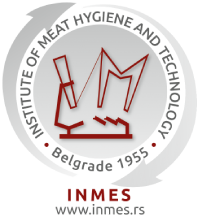Pigs and cattle slaughter process hygiene in a large-scale and small-scale abattoir: A report from one county in Serbia
Abstract
Microbiological data on hygiene indicators are important for assessment of hygiene levels in abattoirs and control of carcass contamination. Risk categorization of slaughterhouses should be based on a process hygiene output through the use of indicator organisms – Total Viable Counts (TVC), Enterobacteriaceae counts (EC) and Salmonella spp. – monitored on carcasses. The level of TVC indicates the overall hygiene in abattoirs (equipment, tools, workers), while the presence of EC on carcasses can indicate fecal contamination which can occur during slaughter/dressing. Detection of Salmonella spp. indicates the presence of pathogens, with potential origin from the farm. The aim of this study was to assess the slaughter process hygiene in abattoirs of different sizes and throughputs, a large- and a small-scale abattoir, and to analyze differences in process hygiene levels based on implementation of their self-control plans, throughout a period of five years for cattle and six years for pigs. In the large-scale abattoir, TVC levels were slightly higher on cattle carcasses than on pig carcasses, but were always within the regulatory satisfactory or acceptable ranges. In the small-scale abattoir, low counts of EC were observed on cattle and pig carcasses, with slightly higher levels on cattle carcasses, but the counts were always within the regulatory satisfactory range. Higher TVC levels on both cattle and pig carcasses were observed in the large-scale abattoir versus the small-scale abattoir, but both abattoirs still showed process hygiene levels within the regulatory satisfactory or acceptable range. Salmonella was recovered only from two pig carcasses in the large-scale abattoir. The study revealed that TVC levels differed more on pig carcasses, while EC levels differed more on cattle carcasses. Process hygiene levels in both abattoirs were always in the allowed regulatory range and also were similar to the hygiene levels in other, developed European countries.





